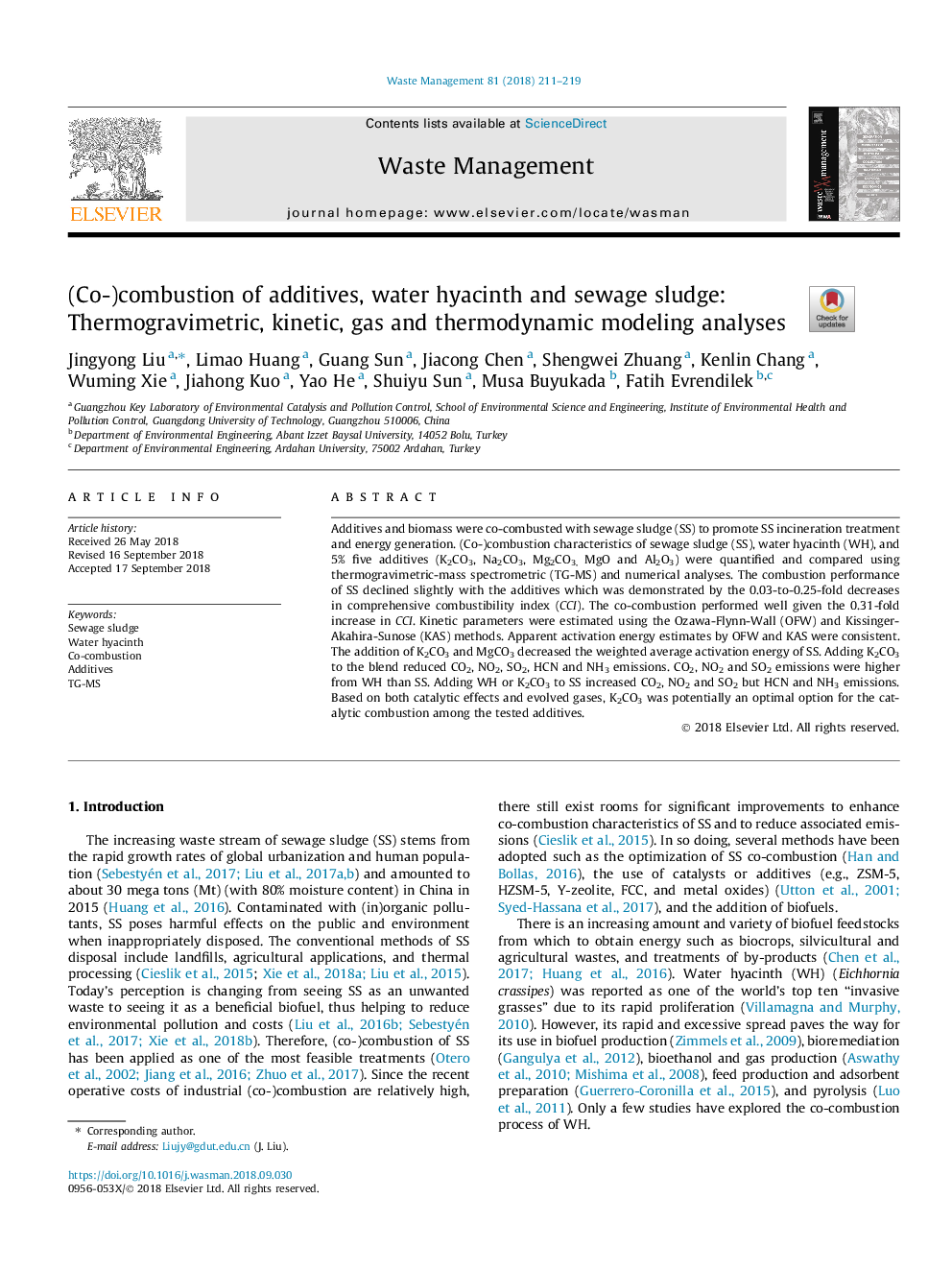| کد مقاله | کد نشریه | سال انتشار | مقاله انگلیسی | نسخه تمام متن |
|---|---|---|---|---|
| 11013080 | 1797395 | 2018 | 9 صفحه PDF | دانلود رایگان |
عنوان انگلیسی مقاله ISI
(Co-)combustion of additives, water hyacinth and sewage sludge: Thermogravimetric, kinetic, gas and thermodynamic modeling analyses
دانلود مقاله + سفارش ترجمه
دانلود مقاله ISI انگلیسی
رایگان برای ایرانیان
کلمات کلیدی
موضوعات مرتبط
مهندسی و علوم پایه
علوم زمین و سیارات
مهندسی ژئوتکنیک و زمین شناسی مهندسی
پیش نمایش صفحه اول مقاله

چکیده انگلیسی
Additives and biomass were co-combusted with sewage sludge (SS) to promote SS incineration treatment and energy generation. (Co-)combustion characteristics of sewage sludge (SS), water hyacinth (WH), and 5% five additives (K2CO3, Na2CO3, Mg2CO3, MgO and Al2O3) were quantified and compared using thermogravimetric-mass spectrometric (TG-MS) and numerical analyses. The combustion performance of SS declined slightly with the additives which was demonstrated by the 0.03-to-0.25-fold decreases in comprehensive combustibility index (CCI). The co-combustion performed well given the 0.31-fold increase in CCI. Kinetic parameters were estimated using the Ozawa-Flynn-Wall (OFW) and Kissinger-Akahira-Sunose (KAS) methods. Apparent activation energy estimates by OFW and KAS were consistent. The addition of K2CO3 and MgCO3 decreased the weighted average activation energy of SS. Adding K2CO3 to the blend reduced CO2, NO2, SO2, HCN and NH3 emissions. CO2, NO2 and SO2 emissions were higher from WH than SS. Adding WH or K2CO3 to SS increased CO2, NO2 and SO2 but HCN and NH3 emissions. Based on both catalytic effects and evolved gases, K2CO3 was potentially an optimal option for the catalytic combustion among the tested additives.
ناشر
Database: Elsevier - ScienceDirect (ساینس دایرکت)
Journal: Waste Management - Volume 81, November 2018, Pages 211-219
Journal: Waste Management - Volume 81, November 2018, Pages 211-219
نویسندگان
Jingyong Liu, Limao Huang, Guang Sun, Jiacong Chen, Shengwei Zhuang, Kenlin Chang, Wuming Xie, Jiahong Kuo, Yao He, Shuiyu Sun, Musa Buyukada, Fatih Evrendilek,